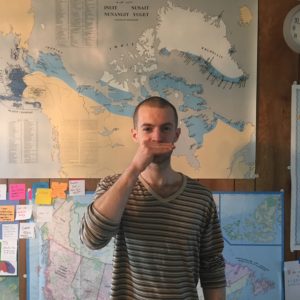
This whiteboard is busy with Craig’s Lists upon Craig’s Lists–some within other Craig’s Lists, too. Clearly, the student who made all these notes knows what she’s doing to succeed in class. (Denise Chan, Flickr, Creative Commons)
For this post and more in the future, I’ll be writing about how WAYK techniques can be useful in life outside of language-learning contexts. Although just about all WAYK activity focuses on second-language acquisition, we’re also aware that WAYK’s techniques can be–and often already are–useful in learning material in any discipline. No matter how concrete or abstract, academic or practical, rote or conceptual, learning can be accelerated through the techniques WAYK players invent and use. Through this series, I’ll explore how I have noticed and used WAYK techniques in my life. I hope these posts will inspire you to think about using WAYK in your daily life.
One of the techniques that most remarkably and repeatedly appears in my learning outside of WAYK is “Craig’s List,” which organizes information into convenient sequences of related things that help you remember items one after the other. In basic WAYK play, you may have Craig’s Lists for vocabulary items, as simple as “yes/no”, “mine/yours”, and “want/have/give/take”. More than that, Craig’s Lists can be melded with other WAYK techniques and methods, like “Travels with Charlie” (“Tarzan at the Party”/”Getting to the Party”/”What Happened at the Party Last Night?”/”What if Parties Were Illegal?”). Combined with “Copycat”, “My Turn/Your Turn”, and “In Threes”, Craig’s Lists are excellently efficient tools for memorizing language that eliminate the need to pore over long and tedious written vocabulary lists.
If the idea of organizing bits of knowledge into sequences doesn’t sound new to you at all, it shouldn’t. You’ve probably wielded this technique a lot in school before you ever even learned about WAYK. Maybe you’ve memorized mnemonics, like the colors of the rainbow or the names of the planets in our solar system. On more intense fronts, you might have known someone who was dedicated to memorizing the first 100 digits of pi or parts of crucial documents in your country’s history. In my college years, as a Materials Science and Engineering major, I successfully practiced Craig’s Lists to memorize properties of materials. [1]
The magic of Craig’s Lists is that they can start off short and become longer and longer without having to tax your brain. Once you practicing reciting a Craig’s List, as soon as you rattle off one item in the sequence, your brain will instantly recall the next item, and the next item, and on and on all the way to the end. In typical WAYK games, new Craig’s Lists have a maximum of four items (words or phrases). When new items arise, if they are relevant to existing Craig’s Lists, they are tacked on the end, so when you are later asked to recite a Craig’s List with the new item, you can easily remember both the new item and the old items.
For example, in a game of WAYK in English, a list of locative prepositions may start simple, like “above/below”. You practice language using the words in this list first. If you are ready for more language, you may learn a longer Craig’s List, “above/below/in front/behind“, and practice the new prepositions while refreshing the already-taught ones. This Craig’s List can be further extended to “above/below/in front/behind/between/next to“, and so on. Notice also that in each pair of items introduced, the items are very closely related; two of the three pairs are opposites, in fact. Craig’s Lists can pack extra punch when portions of them are in some natural order; the long list above should be easier to recall than a less-ordered sequence like “between/in front/below/next to/above/behind”. An even better bonus comes up when items come in a natural order, as in “one/two/three/four”.
Craig’s Lists may appear to become complicated when you are dealing with networks of things. You can use multiple Craig’s Lists for this purpose, with some of the lists containing the same item. Naturally, you may need to be careful not to mix the lists accidentally, but you may think of these lists like a string of dominoes: you may memorize the connections between two items at a time, and put those connections, rather than simply the items themselves, in the lists. This is how I remembered the independent state variables that the four thermodynamic energy values of a material are dependent upon. [2]
You can solidify the connections between elements in Craig’s Lists by working the items into paragraph form. Separate Craig’s Lists can be woven together to build strong connections between words, even if the words aren’t intrinsically related. For example, if we have the Craig’s Lists “fork, knife, spoon”, “before, now, later”, and “above, below, in front, behind”, we can construct a (strange, yet helpful) string of sentences that reads: “Before, the fork was above the knife. Now, the fork is below the spoon. Later, the fork will be in front of the knife but behind the spoon.”
Outside of language learning, Craig’s Lists can be applied to practical matters from grocery shopping (milk, butter, bread, bagels: notice the dairy/bread segue) to bike check-ups (brakes, gears, tires, tubes: notice the rough front/back, out/in order of this list), and even to fun things like song lyrics. Meanwhile, our education system is shifting focus from rote recall to holistic conceptual understanding, but believe it or not, Craig’s Lists can help even with the latter. The sequential order encoded in Craig’s Lists can help you recall cause-and-effect chains, like the water cycle. [3] Craig’s Lists can help you memorize loads of information, which you can then process to find and analyze the connections between pieces of information. (This processing is encapsulated in another technique, Riddle-Me-This, in which you figure things out on your own.)
It’s always better, on the whole, to have your things and thoughts in order rather than to have them all scattered about, with no rhyme or reason as to where they are. Craig’s Lists conveniently help you learn and recall related items. Perhaps you could make a Craig’s List out of the techniques I’ll be writing about for the rest of this series of posts!
[1] For a basic example: I took a list, from one class, of certain basic crystalline structures (hexagonal close-packed (hcp), face-centered cubic (fcc), body-centered cubic (bcc), diamond cubic) and recalled some of their properties as I went through each item in the list (hexagonal close-packed planes are stacked in an ABABAB… structure, each atom has 12 neighbors, and the unit cell is a rectangular prism and has 4 atom-equivalents in it; face-centered cubic planes are stacked in an ABCABC… structure, and each atom also has 12 neighbors, but the unit cell is a cube and has 4 atom-equivalents in it; and so on).
[2] Internal energy is minimized, at equilibrium, with respect to given entropy and volume values; enthalpy, to given entropy and pressure values; Helmholtz free energy, to given temperature and volume values; and Gibbs free energy, to given temperature and pressure values.
[3] The relevant Craig’s List for the water cycle could go, “ocean water, water vapor, clouds, precipitation, runoff”. Ocean water is evaporated; it changes from a liquid to a gas due to higher temperatures in the air. Water vapor may be blown by wind toward land. When water vapor reaches higher air, which is colder, it will rever to its liquid phase in small droplets and form clouds. As the droplets become heavy enough, they fall as precipitation (rain, snow, and other forms). If precipitation happens over land, water will move downhill as runoff, through rivers or sewer systems. (Naturally, this is a simplified picture of the water cycle; I’m ignoring complications like water seeping into the ground and entering the underground water table.)




